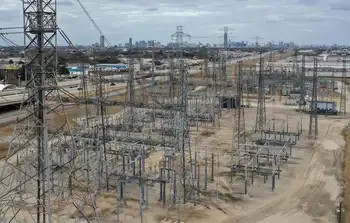Examining the dynamics of a partial meltdown
JAPAN - The difference between a partial meltdown and a full meltdown at a nuclear plant is enormous, both in the degree of damage and in the potential release of radiation, experts in nuclear power said.
A partial meltdown, like those suspected at two reactors in northeastern Japan over the weekend, may not necessarily mean that any of the uranium fuel in the core has melted, experts said. The fuel rods may be only damaged, a portion of them having been left uncovered by cooling water long enough to crack, allowing the release of some radioactive elements in the fuel.
But in a full meltdown — which could occur within hours if all cooling water was lost and the rods became completely uncovered — melting is all but guaranteed, as thousands of fuel pellets fall to the bottom of the reactor and heat themselves into a molten pool at several thousand degrees Fahrenheit.
While it is considered highly unlikely that a full meltdown would result in a nuclear chain reaction, experts said, such lava-like fuel might breach the reactorÂ’s pressure vessel and then its containment, leading to widespread release of radioactivity.
To avoid such a catastrophe, workers at the two reactors have tried to pump enough seawater into them to keep the cores completely covered. But unless normal cooling systems can be restored, they will have to keep pumping seawater for weeks.
“You’re looking at several thousands of gallons a day potentially out as long as a year,” said Arnold Gundersen, a former nuclear engineer who worked on reactors of the same design as those in Japan.
The Japanese reactors, made by General Electric and built in the 1970s, have thousands of thin, 12-foot-long fuel rods stacked like straws inside a pressure vessel made of steel up to 6 inches thick. The rods, tubes made of a zirconium alloy, contain ceramic pellets of uranium oxide that are about the size of a fingertip.
Ordinarily, this fuel core is kept submerged in water that circulates to remove the heat of nuclear fission, making steam that is used to turn turbines to generate electricity.
With loss of power and pumps after the earthquake, the fission reactions at the plants were successfully halted. But there is much residual heat in the reactors, both because they operated at about 550 degrees Fahrenheit and because the radioactive elements in the fuel continue to produce heat as they decay. Without pumps to circulate the water, it will boil off quickly.
That apparently is what happened at least one of the reactors, leaving the upper part of the cores uncovered until technicians, in what has been described as a desperate measure, rigged up a way to pump seawater in. The seawater is laced with boric acid, which would quench a fission reaction if one began.
Once part of the core is exposed, the zirconium starts to oxidize, or rust, extremely rapidly, becoming brittle and cracking. The rusting also results in the production of explosive hydrogen the cracking allows the most volatile radioactive elements in the fuel, like iodine and cesium, to escape. To prevent pressure buildup, the gases are allowed to vent into the containment, and in this case must have leaked or were vented through the containment into outside air.
As the rods crack apart, the pellets inside them can start to fall out, which engineers call a washout.
“There’s nothing holding them there,” said Margaret Harding, a consultant who worked on reactor designs for General Electric for 27 years. But since lower parts of the core are undamaged, the pellets may end up in various places around the reactor, not necessarily in a clump on the floor. “It’s not guaranteed you’re going to have melting,” she said.
At the Three Mile Island accident in Pennsylvania in 1979, in which the core was partly uncovered, robotic cameras later determined that melting had occurred. In the Chernobyl accident in 1986, considered the worldÂ’s worst, a power surge led to explosions and a reactor fire, sending an enormous plume of radioactive material into the air.
If a full meltdown were to occur at one of the Japanese reactors — meaning operators were unable to keep pumping water and the core became completely uncovered — molten fuel would soon pool on the floor of the pressure vessel. “The worst case is that the molten mass leaves the vessel and creates a steam explosion,” Mr. Gunderson said. “That would destroy the containment.”
Related News

Ontario Government Consults On Changes To Industrial Electricity Pricing And Programs
TORONTO - The Ontario government has announced plans to hold consultations to seek input from businesses about industrial electricity pricing and programs. This will be done through Ontario's online consultations directory and though in-person sector-specific consultation sessions across the province. The in-person sessions will be held in all areas of Ontario, and will target "key industries," including automotive, forestry, mining, agriculture, steel, manufacturing and chemicals.
On April 1, 2019, the Ontario government published a consultation notice for this process, confirming that it is looking for input on "electricity rate design, existing tax-based incentives, reducing system costs and regulatory and delivery costs."…




